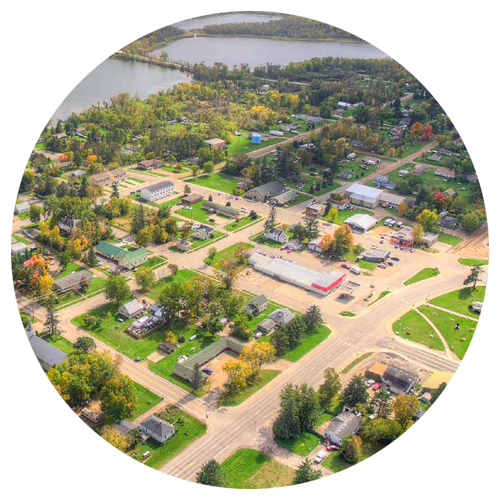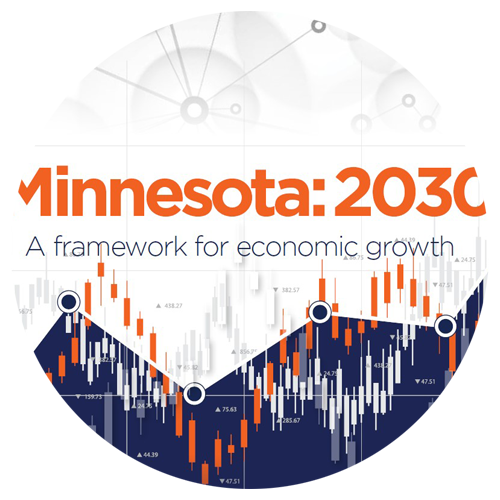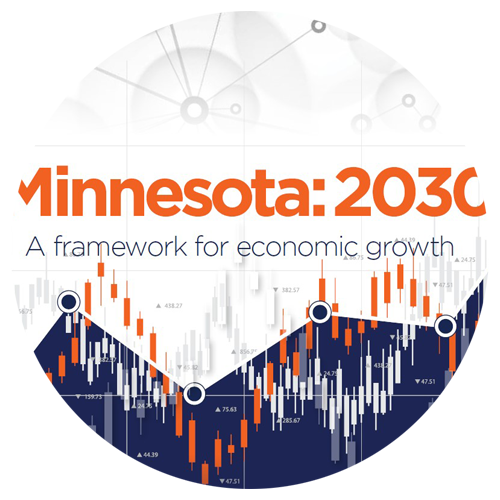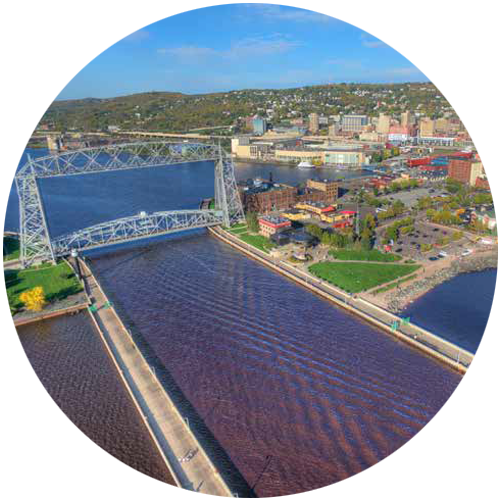Differences across regional economies and demographic groups
Minnesota: 2030
A framework for economic growth
Minnesota's geographic and economic structure offer unique attributes and opportunities across regions. The Twin Cities metropolitan area is complemented by distinct and competitive regions and regional centers that are interconnected across industries. Many economic trends apply broadly, however commonalities and differences also exist across the state’s economic regions and demographic groups.
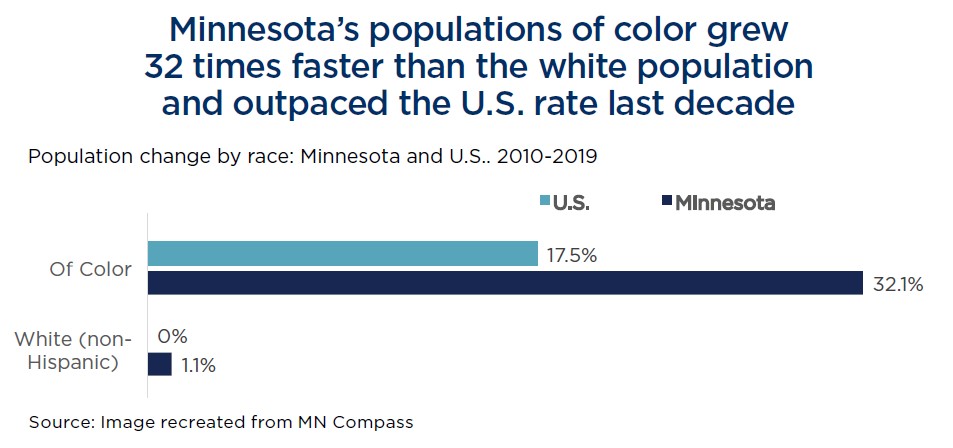
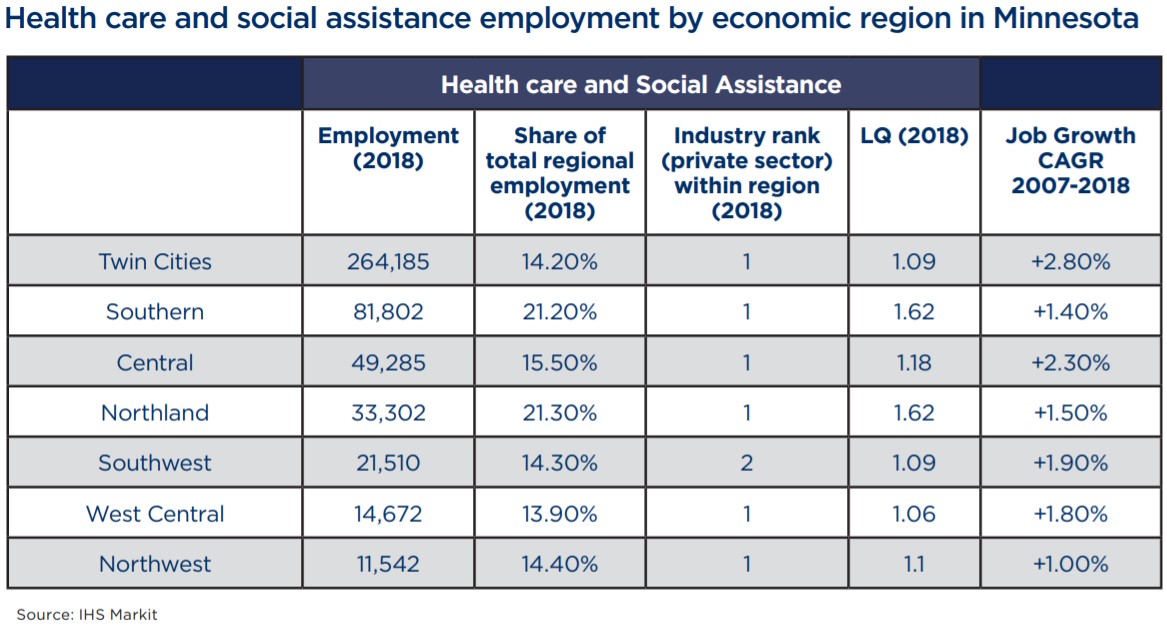
Slowing population and labor force growth has impacted rural areas most. Minnesota’s population shifted toward urban counties in recent years, leaving more rural parts of the state with flat or declining populations. Seventy-plus percent of Minnesotans now live in urban geographies, with only eight percent in remote geographies. COVID-19 may influence this trend through changing migration patterns and telecommuting, but it was intensifying pre-pandemic.
Diversity and immigration have been an economic boost to regional economies; yet, racial disparities remain a top challenge across the state. From 2010-2019, Minnesota populations of color grew 32.1 percent, while Minnesota’s white population grew just 1.1 percent. Much of this growth occurred in the Twin Cities, although a number of Greater Minnesota counties also grew their diverse populations, boosting local economies. Counties where diverse populations concentrate are typically the counties experiencing population gains in Greater Minnesota.
However, despite the economic contributions of diverse Minnesotans and new immigrants, the state continues to see racial and ethnic disparities across a range of social and economic indicators. This remains a top challenge for communities around the state.
Manufacturing, health care, and food and agriculture tie the state’s regions together, while additional industry clusters present distinct opportunities and challenges. Manufacturing, health care, and food and agriculture are significant economic sectors in nearly every region of the state. These sectors tie together the state’s diverse regions through trade and a shared exposure to the opportunities and threats brought about by changes in these sectors.
Each economic region of the state also possesses industry specializations not always reflected in the statewide data. The state’s share of jobs in mining, for example, is well below the U.S. average. Northeast Minnesota’s concentration of jobs in metal ore mining, however, boasts a location quotient of 96.7, meaning this industry is over 96 times the U.S. average in Minnesota’s Northeast. These types of regional specializations offer distinct opportunities and challenges – and should continue to be a central part of regional economic strategies.
